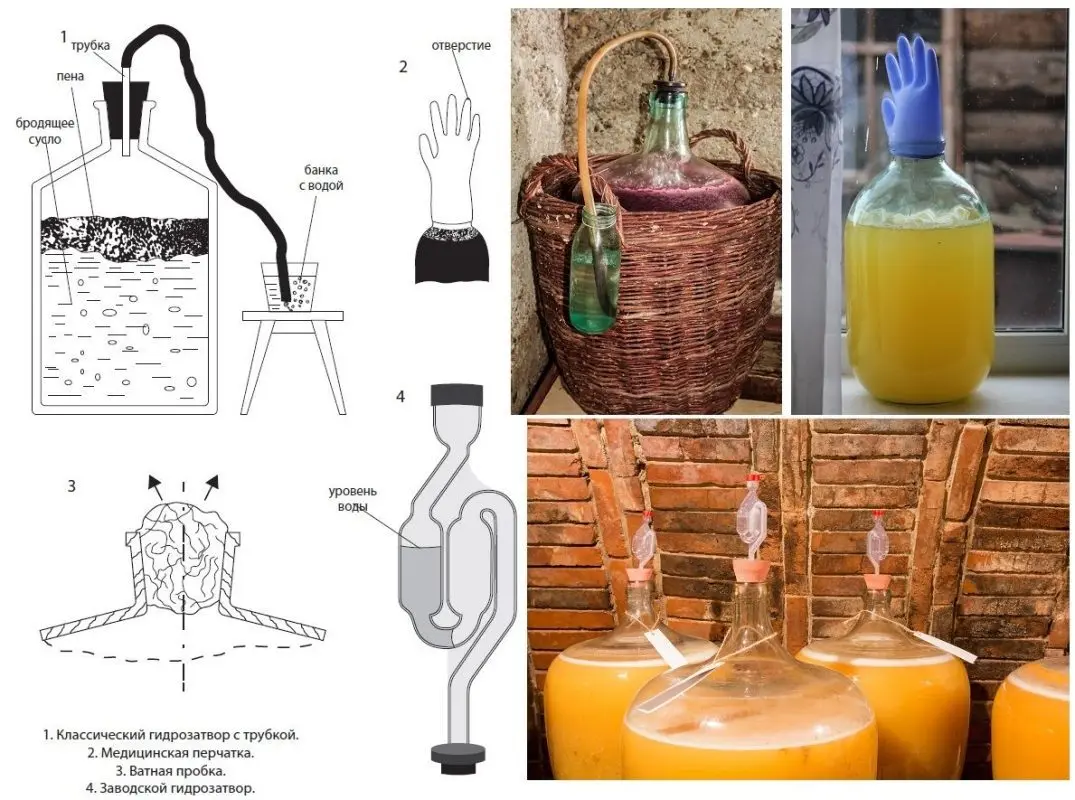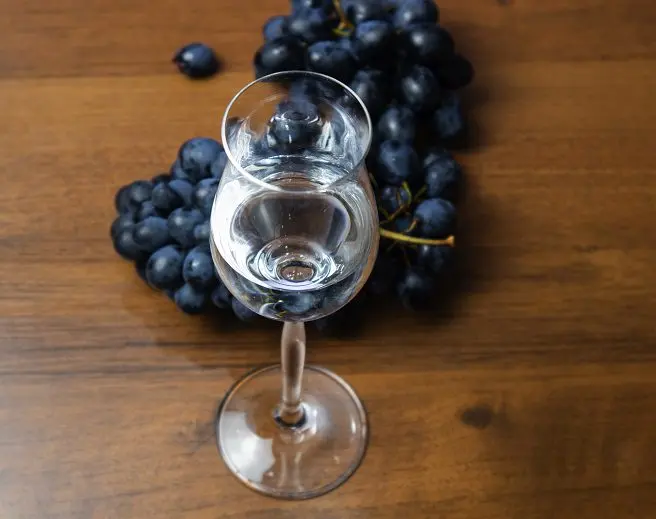Due to unpretentiousness, frost resistance and high yield, Isabella grapes have become one of the most common varieties in Russia. Wine, juice and jam are made from these berries, and with the right approach, excellent strong alcohol is obtained. I bring to your attention a recipe for chacha from Isabella grapes, which is adapted for home cooking. Everyone can make the legendary grape moonshine, only raw materials are required.
Ingredients:
- water – 5 liters;
- sugar – 2 kg;
- Isabella grapes – 12 kg.
The original chacha is prepared without sugar, but in the case of the Isabella variety, this is not always possible. The fact is that in the northern regions of Russia, even ripe grapes have low sugar content, so the yield of moonshine will be very low. If the grapes taste sour, be sure to add sugar. By following the technology below, the characteristic taste and aroma will remain.
Chacha recipe from Isabella
1. Harvest grapes in dry weather. On the surface of the fruit are wine yeasts that promote fermentation. Rain washes away microorganisms, so I recommend picking grapes for chacha only when the berries are dry. Thanks to natural wine yeast, you can avoid adding other yeast, such as pressed baker’s or dry yeast, which negatively affect the smell.
2. Peel the unwashed grapes from the leaves and transfer along with the scallops. Scallops and bones reduce the acidity of the mash, giving the drink an original, difficult to describe flavor that chacha is so famous for.
You can use pomace remaining after making wine or juice, the proportions do not change.
3. Place the grape mass in a fermentation container, add water and sugar (optional). Stir, install a water seal, put for 15-45 days (depending on the activity of the yeast) in a dark place with room temperature (not higher than 30 degrees).

4. After the end of fermentation (the water lock does not emit gas, the mash is bitter in taste without sweetness, a layer of sediment has appeared at the bottom), clean the mash from the pulp by filtering through gauze.
5. Overtake grape mash for the first time. Do not divide the output into fractions (“heads”, “body” and “tails”) and use a moonshine still without a steamer or other devices that trap essential oils. Finish selection when the strength in the jet falls below 30 degrees. The product may become cloudy, this is normal.
6. Measure the strength of the resulting grape moonshine. Determine the amount of pure alcohol.
7. Dilute the distillate with water up to 20% and distill again. The first 12% of the amount of pure alcohol is collected separately and poured. This harmful part is called “heads” and can only be used for technical purposes. Select the main product before the drop of the fortress in the jet below 45%. Then dilute the collected distillate to 40-50%.
8. Pour chacha into bottles and leave in a cool place for 20-40 days. Aging will improve the taste.

Attention! In the European Union and the United States, alcoholic beverages from Isabella grapes are prohibited from being sold due to the high content of methyl alcohol, which negatively affects the functioning of the liver, kidneys and optic nerve. Therefore, do not abuse the chacha from Isabella. A severe hangover is not the worst thing that can happen. At the same time, the concentration of methanol 70-120 mg per 1 liter of fermented juice (in other varieties 30-40 mg/l) is not so high as to speak of a complete rejection of the drink.









